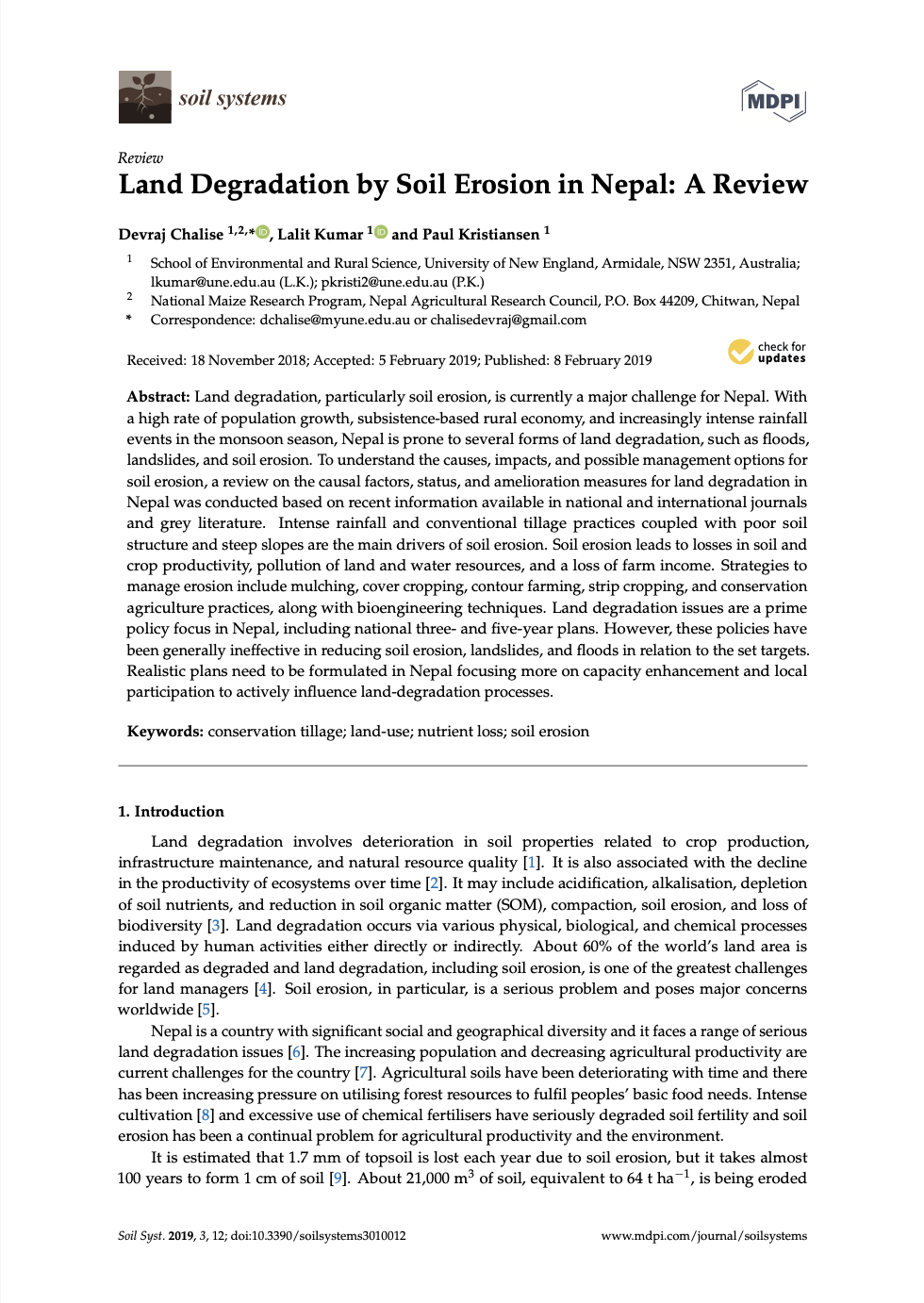Resource information
Land degradation, particularly soil erosion, is currently a major challenge for Nepal. With a high rate of population growth, subsistence-based rural economy, and increasingly intense rainfall events in the monsoon season, Nepal is prone to several forms of land degradation, such as floods, landslides, and soil erosion. To understand the causes, impacts, and possible management options for soil erosion, a review on the causal factors, status, and amelioration measures for land degradation in Nepal was conducted based on recent information available in national and international journals and grey literature. Intense rainfall and conventional tillage practices coupled with poor soil structure and steep slopes are the main drivers of soil erosion. Soil erosion leads to losses in soil and crop productivity, pollution of land and water resources, and a loss of farm income. Strategies to manage erosion include mulching, cover cropping, contour farming, strip cropping, and conservation agriculture practices, along with bioengineering techniques. Land degradation issues are a prime policy focus in Nepal, including national three- and five-year plans. However, these policies have been generally ineffective in reducing soil erosion, landslides, and floods in relation to the set targets. Realistic plans need to be formulated in Nepal focusing more on capacity enhancement and local participation to actively influence land-degradation processes.

